How the German 14th Panzer Corps held back the offensive of the two allied armies for 38 days
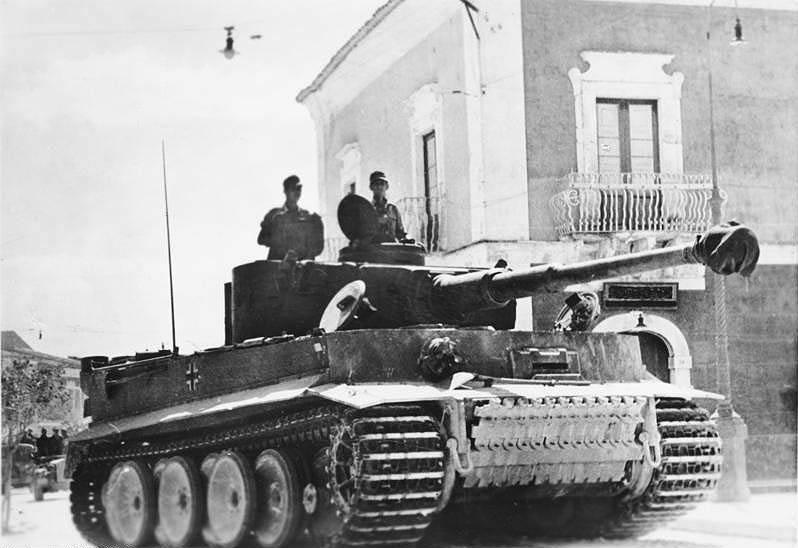
Heavy German tank "Tiger", Sicily, 1943
Operation "Minced Meat"
With the defeat of the Italo-German grouping in Tunisia (Why the Allies did not open a second front in France in 1943) the Allies significantly strengthened their strategic positions in the Mediterranean basin. The threat of an invasion of the Apennine Peninsula was created.
Back in February 1943, the German General Staff of the ground forces, assessing the likely actions of the enemy in the Mediterranean theater of war, noted that Sicily would become the enemy's priority target. Having occupied this island, the enemy will receive a foothold for conducting air and land wars against Italy, and will also significantly improve the ability to transfer troops and cargo across the Mediterranean.
In the future, the Allies were able to mislead the German headquarters regarding their plans. British intelligence conducted Operation Mincemeat. At the end of April 1943, with the help of a British submarine, a special “drowned man” dressed in the uniform of a British officer was thrown to the coast of Spain. The deceased had documents in the name of an army courier, William Martin. To maintain the legend, the British turned to the Spanish Foreign Ministry with a request to return the body of an officer who died in a plane crash. Also in the Times newspaper was published an article about the death of a Marine officer.
"Major Martin" had a briefcase with "secret documents". Spain was flooded with German agents, and specially fabricated documents on the preparation of the Allied landing operation in Greece and Sardinia were immediately photographed and hit the Führer's desk. In Germany, they decided that the documents were genuine.
As a result, the preparation of the defense in the Mediterranean theater was already carried out on the basis of an incorrect assessment of the situation. Now Sicily was only one of the possible targets of the enemy, along with Corsica, Sardinia, the Peloponnese and the Dodecanese. The Germans even rejected the opinion of Mussolini, who believed that the enemy would first strike at Italy.
To organize the defense in Greece, Rommel was sent as a "military attache", and the 1st tank division. Two more mobile formations began to be prepared for transfer from Russia. This created favorable conditions for the Allied landings in Sicily.
It is worth noting that from a military point of view, the Germans were right. Italy was more easily captured by attacks from Sardinia and Corsica, allowing landings in Central and Northern Italy. The threat from Sardinia and Corsica forced the Italians and Germans to disperse their forces to defend the entire western coast of the peninsula. These islands were more convenient bases for fleet, Air Force and infantry than Sicily, from where it was possible to advance only in southern Italy.
But the Allies refused to land on Sardinia and Corsica mainly for political reasons. They played for time and did not want heavy fighting with the enemy. Also, on these islands, landings could only be supported from aircraft carriers, which could not be effective enough.
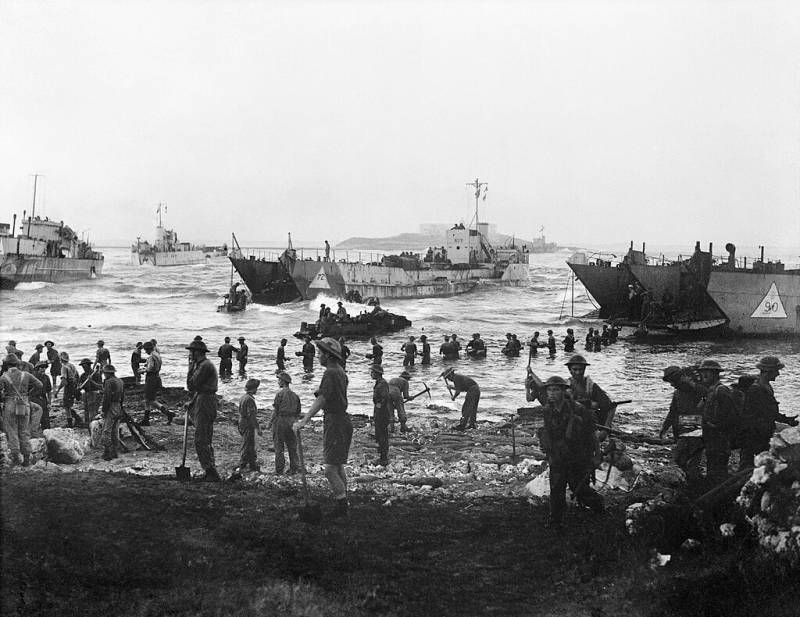
British troops on the Sicilian coast. July 10, 1943
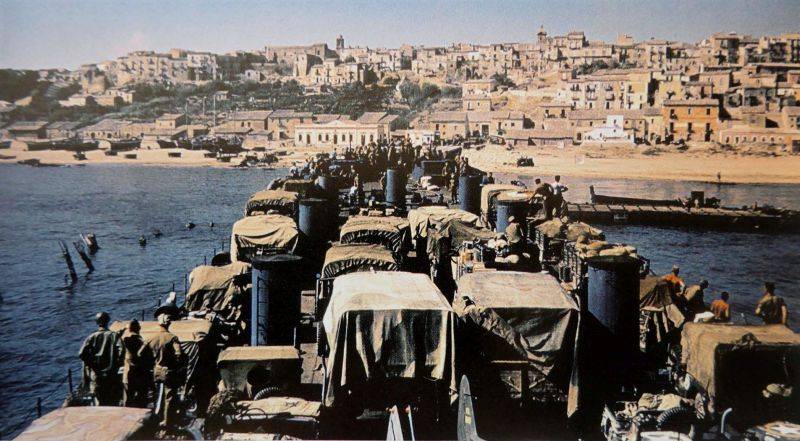
American troops land in the city of Gela in Sicily
Fermentation in Italy
The victory of the Red Army in the battle on the Volga, the death of the Italian army in Russia (The death of the Italian Alpine Corps), a complete defeat in North Africa, which deprived Rome of hopes for creating its own world empire, caused a corresponding ferment in the Italian elite and society.
In Italy, they understood that now they were the main goal of the allies and did not want a total war on their territory. Anti-war moods in society were spurred on by the fall in production, the breakdown of finances and the rise in prices for essential goods.
The positions of the left-wing parties, which opposed the country's participation in the war, are strengthening. Bourgeois-democratic parties, dissatisfied with the outcome and prospects of the war, are also joining the anti-war positions. They call for an immediate separate peace, the elimination of the fascist system and the monarchy, the creation of a republic, the restoration of the rights and freedoms of citizens.
In March 1943, representatives of the left parties - the communist, socialist and party of action (an association of socialist, radical intelligentsia), held a joint conference in Lyon. A patriotic program was adopted: an uprising to overthrow the Mussolini regime, a separate peace and democratic reforms. In Northern Italy (an industrialized region of the country) there is a wave of strikes. Up to 300 people went on strike, who came out not only with economic, but also with political slogans.
Mussolini is trying to find a way out of this situation. In March 1943, the Italian Duce offered Hitler to "close the Russian chapter", since Russia "can never be defeated." On April 7–10, the Fuhrer and the Duce met at Klessheim Castle in Salzburg, Austria. Mussolini offered Hitler to achieve an agreement with Russia at any cost, to return everything that the Germans had captured, including Ukraine.
The Duce noted that the Axis countries had lost the initiative, which means that the war would soon be lost. Italy will not be able to return to Africa, then lose the islands. The only hope is peace with Russia and the switching of all military potential to the Mediterranean theater.
Mussolini at that moment offered quite reasonable, logical things. The only way to save the Axis was to make peace with the Russians so that Italy and Germany could fend off British and American attacks on the Western Front, including the Mediterranean Front.
However, the Fuhrer was still in the clouds. He argued to Mussolini that two-thirds of the Russian troops had already been destroyed and it was necessary to press a little more - and victory.

The forces of the parties
In North Africa, the Anglo-American command had 35 divisions, 5 thousand aircraft, 6 battleships, 25 cruisers and a large number of small ships and vessels. There were all conditions for a large landing operation.
Two months passed from the moment of victory in Tunisia on May 12, 1943 to the landing in Sicily. This was due to the excessive caution of the Allies. They overestimated the strength of the enemy, the defensive capabilities of the island. It was believed that it was necessary first to suppress the enemy air force, otherwise the losses of the fleet would be too great.
A big operation required serious preparation. It was necessary to transfer two armies, a lot of equipment and tanks. A large number of transports were required. The troops did not have the appropriate experience in landing. Obviously, the Allies were also waiting for the main forces of the Third Reich to be tied up by fierce battles on the Kursk salient. Therefore, the preparation of the operation was delayed.
The allies formed a powerful strike force to avoid the possibility of defeat and quickly defeat the enemy. The Allied strike force was led by General Dwight Eisenhower. The total number of Allied troops was 470 thousand people. American, British and Canadian troops were part of G. Alexander's 15th Army Group. It included George Patton's American 7th Army and Bernard Montgomery's British 8th Army (which included the 1st Canadian Infantry Division). The first wave had 160 soldiers, 1 guns and 600 tanks. From the air, the operation was supported by 4 aircraft.
The island was defended by the 6th Italian army of General A. Guzzoni. It consisted of 4 divisions, including one motorized (Livorno), plus 6 coastal defense divisions. Coastal defense divisions guarded sections of the coast with a length of more than 100 km each. The armament was weak. The antiamphibious defense was not properly prepared: there were weak barriers and several pillboxes. At the same time, the Italians refused to subordinate their troops to the Germans.
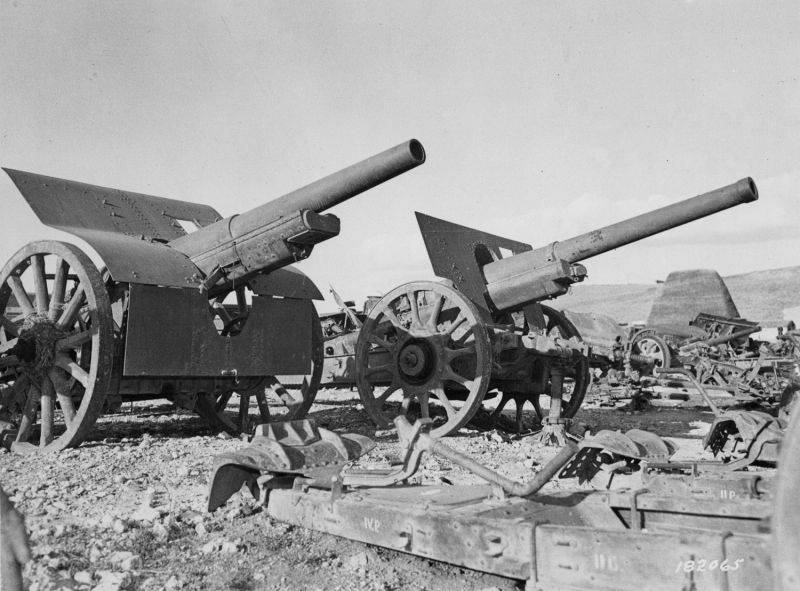
Italian 105mm artillery pieces captured by the Allies in Sicily
The main striking force of the Axis countries in Sicily was the German 14th Panzer Corps of General Hube as part of the Hermann Goering Panzer Division and the newly created 15th Motorized Division. Strong air defense was available in the area of the Strait of Messina. Anti-aircraft artillery could also be used in land battles.
The elite division of the German Air Force "Hermann Goering" was well armed, but it lacked manpower (the number of regiments corresponded to the state of the battalions) and transport. There was also a shortage of experienced mid-level commanders. The German troops were led by Generals Senger and Hube.
In total, there were 300 thousand Italian and 40 thousand German soldiers, more than 140 tanks and 1,5 thousand guns in Sicily. More than 1 aircraft could be supported from the air.
In early July 1943, the Allied forces carried out an operation to capture the island of Pantelleria, which was located between Tunisia and Sicily. Since May 30, the island has been heavily bombed. But of the 45 available coastal batteries aviation disabled only 2. Garrison losses were minimal.
The Italian garrison of 12 on June 11 laid down weapon without a fight. This clearly showed that there would be no fanatical and violent resistance from the Italian army. The Italian troops were demoralized by the defeats in Africa and only wanted peace.
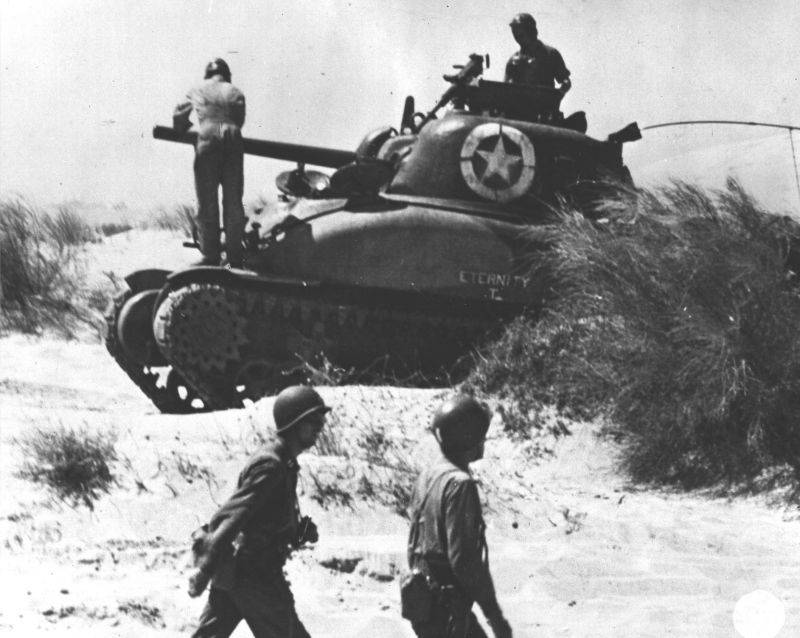
American tank M4A1 "Sherman" Eternity ("Eternity") in Sicily. First appearance of Sherman tanks in Europe. July 10, 1943
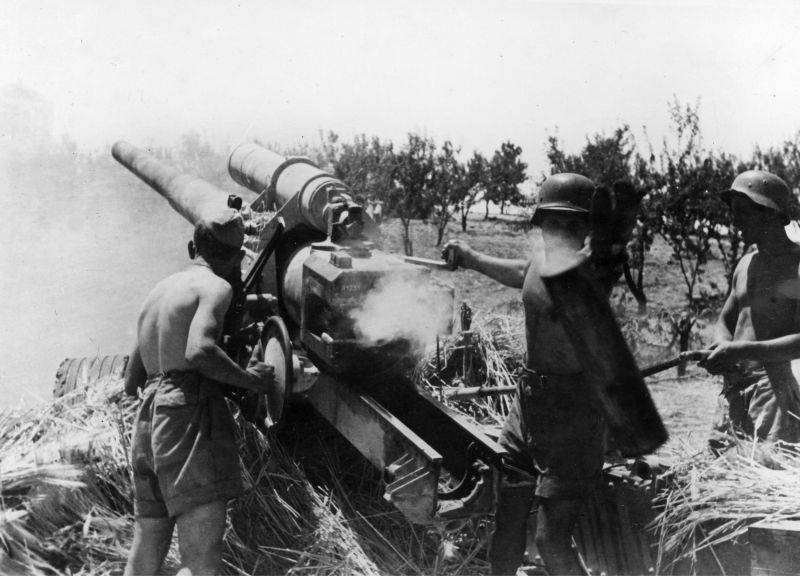
The calculation of the German 105-mm heavy field gun sK 18 is firing in Sicily
Allied plans
The allied command, in order to avoid the risk of defeating the landing force, decided to land two armies not far from each other, followed by an advance inland. This ruled out the possibility of encirclement of enemy troops. The American 7th Army was to land in the Gulf of Gela south of the center of Sicily: the 3rd Infantry Division and the 2nd Armored Division landed west of Licata, the 1st Infantry Division in the center of the bay, the 45th Infantry Division east of Scoglitti. The 82nd Airborne Division landed behind the line of enemy fortifications at Gela and Scoglitti. That is, the 7th Army landed in a strip about 40 km long.
The 8th Army (there were 4 divisions in the first echelon) was advancing in the area between Syracuse and the southeastern tip of the island: the 30th Corps landed on both sides of Cape Passero, and the 13th Corps landed to the north in Noto Bay near Avola. The airborne units were supposed to occupy the airfield in Syracuse and the bridge to the south of this city the day before. The length of the strip allocated for the landing of the 8th Army was 50 kilometers.
The allied armies after the landing were to establish communications in the Ragusa region and create a common bridgehead for a further offensive. Then the 8th Army was to move north along the east coast as far as Messina, while the 7th Army was to cover the flank of the 8th Army and clear the rest of the island. It was noted that the mountainous nature of the island, where there were few narrow roads, would slow down the advance of the troops.
The Allies attached decisive importance to the capture of all airfields in Southern Sicily in order to completely paralyze the actions of enemy aircraft and to be able to use their aircraft against the areas of Messina and Southern Italy.
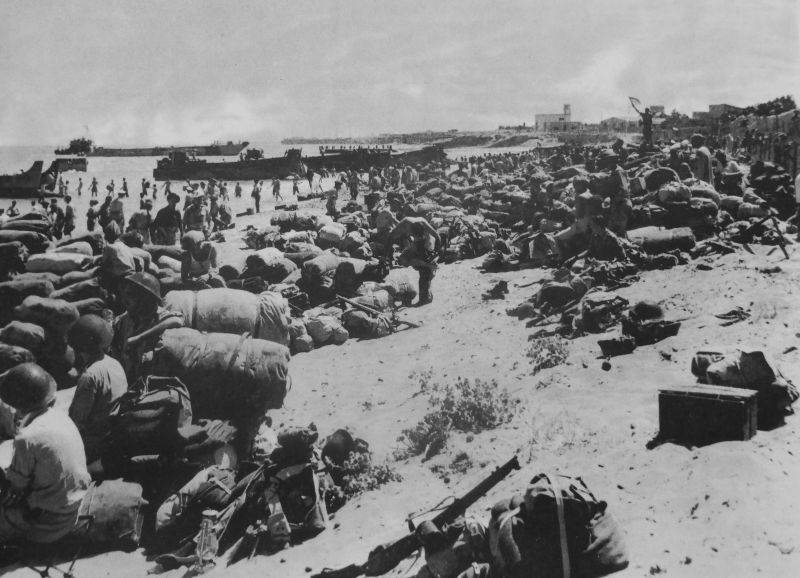
British soldiers landed on the coast of Sicily near the city of Syracuse
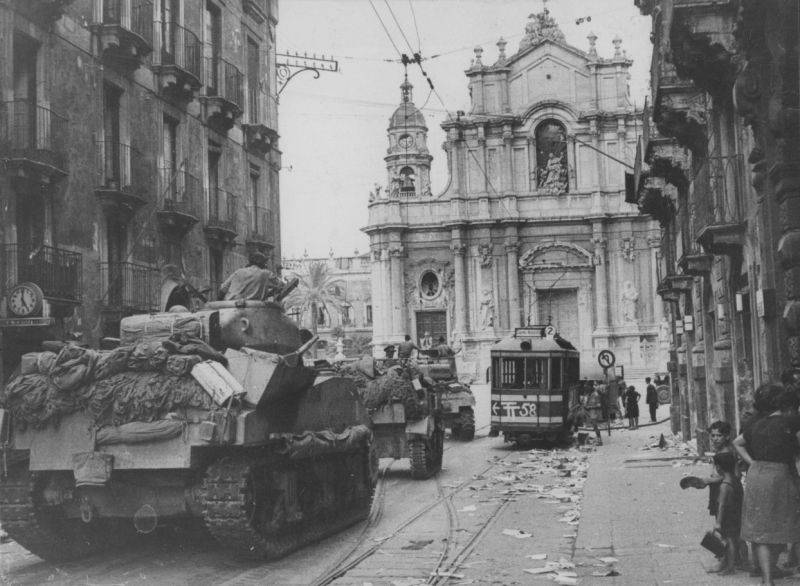
M4A2 Sherman tanks (first and third tanks) of the 4th British Tank Brigade on Via Giuseppe Garibaldi in the Sicilian city of Catania. The second tank from the photographer is the M5 Stuart. In the center of the photo in the background is the Cathedral of St. Agatha. August 5, 1943
Battle
On May 18, 1943, air bombardments of the island began. They continued until the start of the operation. First of all, they hit airfields, trying to destroy enemy aircraft. Also, air strikes were carried out on ports. On the mainland, Naples and Livorno were bombed, through which the main supply of the island went.
On the night of July 10, 1943, the Allies launched Operation Husky. 400 transport planes and 170 gliders with paratroopers took off. However, the actions of the airborne forces had little success. There was little experience, there was a strong storm at sea. Some of the gliders were uncoupled from the planes too early, and they fell into the sea, the landings were dropped far from the intended objects and were scattered over a large area.
The main role was played by the powerful naval artillery of the allied fleet and aviation. The Allies had an overwhelming superiority in aviation. Under powerful attacks from ships and constant air strikes, the Italians faltered and fled. Divisions of the American 7th Army met with little resistance, and the British landed almost without problems. Several airfields that the allied aviation put out of action were quickly put in order.
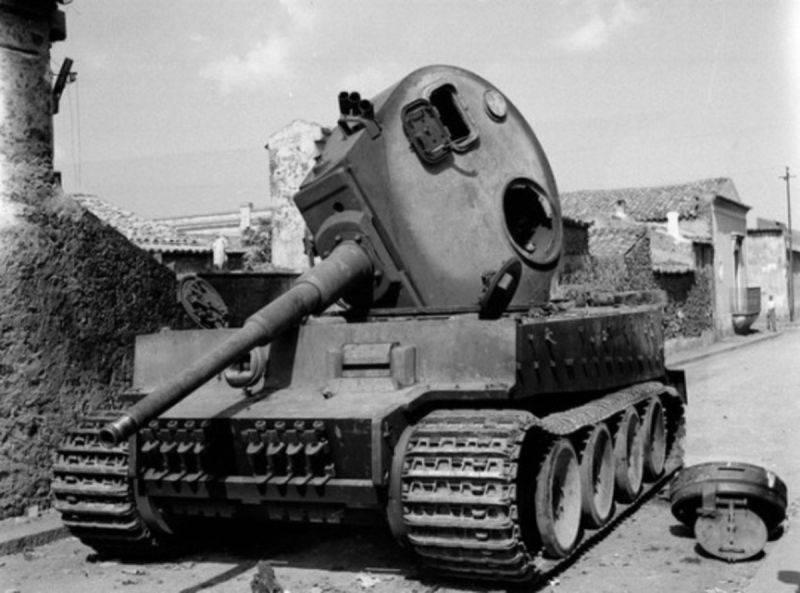
German tank "Tiger" Pz. Kpfw. VI, shot down on one of the streets of Belpasso in Sicily
The Italian army did not want to fight even for their own land. Two Italian coastal defense corps, which consisted partly of the inhabitants of Sicily, fled at the first attacks of the allies. The well-fortified fortress of Augusta was abandoned by the Italian garrison when enemy ships appeared on the horizon. Italian soldiers surrendered or deserted in droves. The officers did nothing to bring order to their units and divisions.
On July 11, the German division "Hermann Goering", with the support of the Italian motorized infantry, counterattacked the enemy. The Americans were pressed in a number of places, forced to flee back to the ships. The Germans then turned east to strike at the enemy, who was moving towards the Comiso airfield, but here success was not achieved.
As a result, the Germans failed to throw into the sea numerous Allied troops that landed on a wide front. But the allies became more cautious.
After it became clear that the Allies limited themselves to landing troops only in the southeastern part of the island, the command of the 6th Italian Army sent reserves to this direction. The 15th Motorized Division, located in the northwest, offered stubborn resistance, holding back the movement of the Americans to the north. In three weeks, the Americans carried out the capture of the western part of the island in wide enveloping actions, where they were opposed only by the weak coastal units of the Italians.
At the same time, the British army had to endure a stubborn battle with the Germans and the remaining combat-ready troops of the Italian army. The British tried to break through to Catania and then to Messina, which led to the collapse of the enemy defense. The corps of the 8th Army were advancing east and west of Etna. The Germans were able to create a strong defense in the area of Lentini and Vizzini. For a whole week, the 13th British Corps tried to break through to Catania. On July 21, the British were forced to go on the defensive. The offensive of the 30th corps also did not lead to noticeable success.
Meanwhile, the Germans received reinforcements - the 29th motorized division arrived. The headquarters of the 14th Panzer Corps also arrived. General Hube actually led the defense of the island. The front has temporarily stabilized. The 29th Motorized Grenadier Division took up defensive positions in the northern sector, the 15th Motorized Division was in the center, and the Hermann Goering division was in the Catania region. They were supported by several Italian units. The mountainous terrain greatly facilitated the defense even without serious engineering efforts.
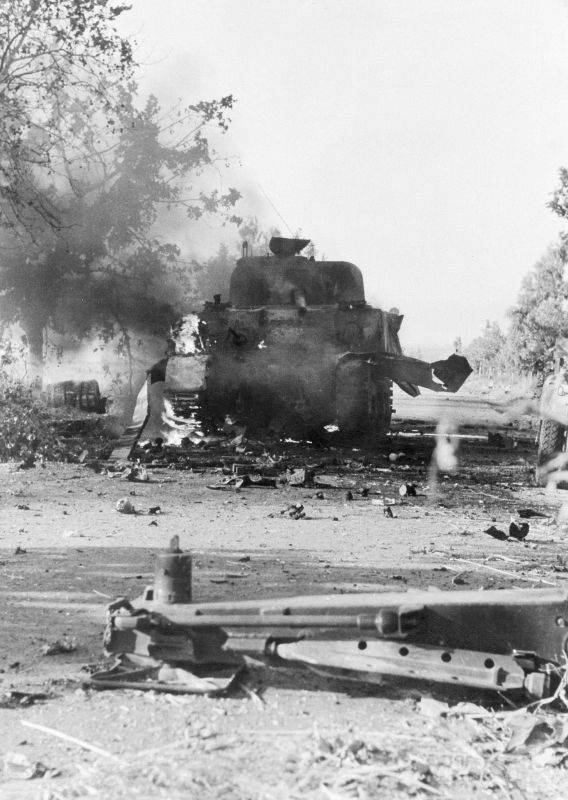
Burning American tank M4 "Sherman", lined in Sicily
In stubborn battles, using a huge advantage in armament and aviation, the British gradually pressed the Germans. The Germans alone and the remnants of the 6th Army could not stop the allied armies, which had an overwhelming superiority in manpower, aviation and weapons. The soldiers recruited from Sicily simply went home. From the Italians, who were originally from the continental part of the country, a powerful stream of refugees formed, who poured towards Messina, where armed crowds seized transports to cross the strait.
After the Americans, meeting almost no resistance, reached Nicosia and San Stefano, there was a threat of encirclement of the Italo-German group on the island. With the help of the fleet, the Americans began to land behind enemy lines. This markedly accelerated their progress. The British increased pressure in the area of Etna. To avoid a catastrophe, as in Tunisia, the German command carried out a skillful withdrawal of the corps. The roads along which the Germans left were consistently destroyed. On August 17, the Americans entered Messina. All German formations with almost all equipment successfully crossed the strait.
The losses of the Germans and Italians amounted to 9 thousand people killed, 46 thousand wounded, 126 thousand (mostly Italians) were taken prisoner. Allied losses: about 8 thousand people killed and missing, over 14 thousand wounded.
The Allies captured the island, creating a springboard for the invasion of Italy. The German corps, during the 38-day battle, held back the onslaught of the two armies and gained time to strengthen the defenses of the peninsula.
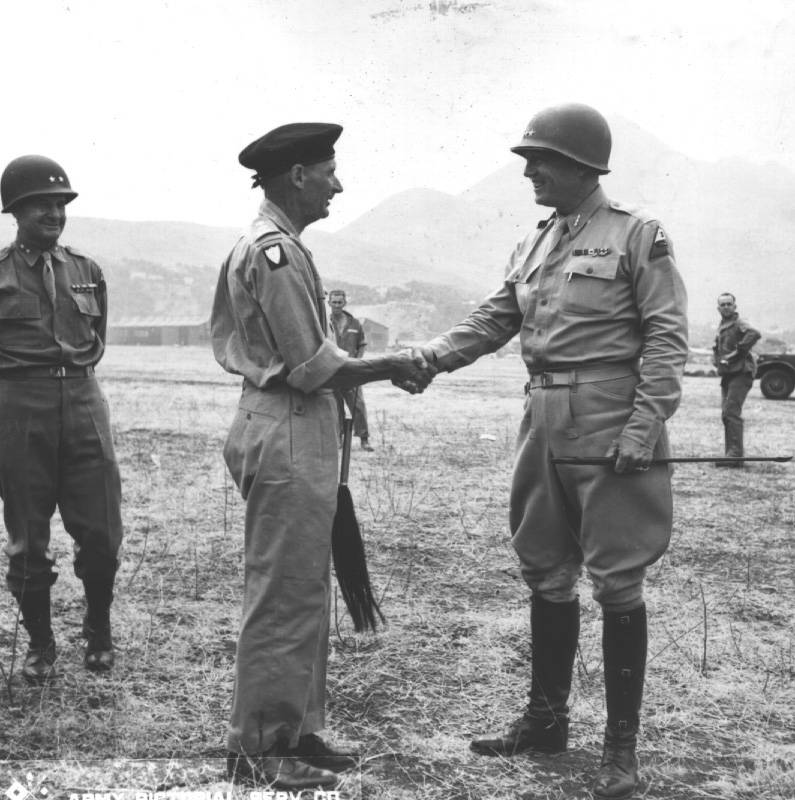
Bernard Montgomery and George Patton in Palermo. July 28, 1943
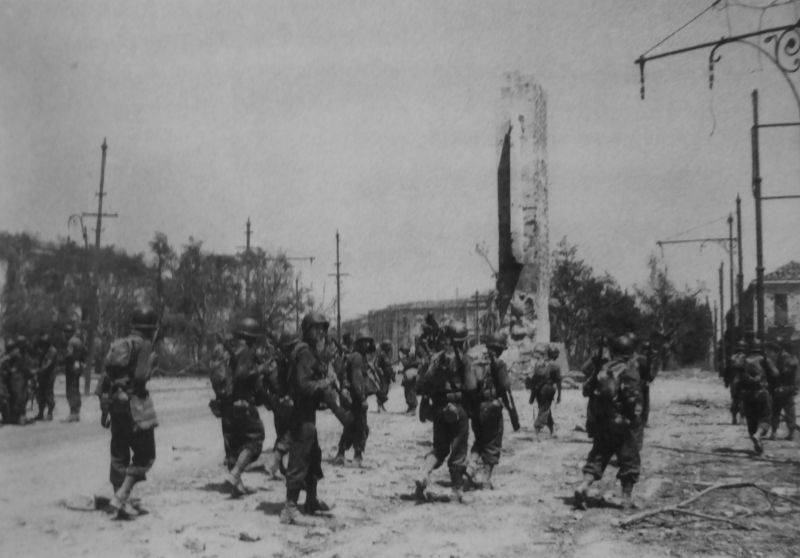
Soldiers of the 157th Infantry Regiment of the 45th US Infantry Division on the street of the captured Italian city of Messina. August 17, 1943
Information